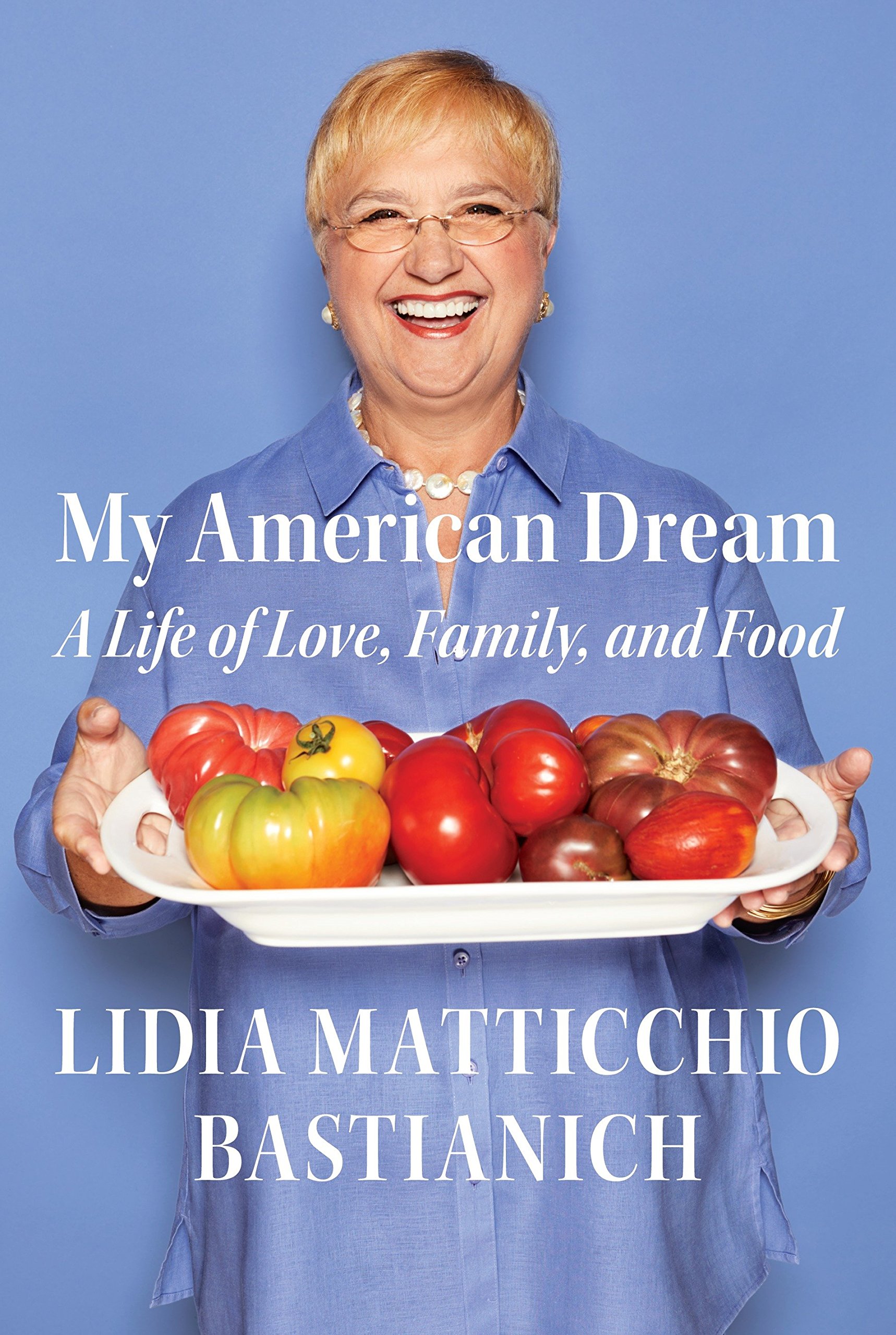Who doesn’t know Lidia, who has written numerous cookbooks and children’s books; whose show on public television has captivated us for years; whose restaurants in New York, Kansas City and Pittsburgh are magnets for lovers of good Italian food; whose food emporium in New York – EATALY – is chock full of any kind of Italian product you could wish for; and Lidia – whose journey as an immigrant to the United States is explained in her heartfelt memoir, “My American Dream”?

Fans of Lidia in the Princeton, N.J. area were treated to an afternoon with her yesterday, when she agreed to speak at the Italian cultural organization where I’m a board member – Dorothea’s House.

During the afternoon, Lidia spoke to a packed crowd about her early life in Pula, a town in the Istria peninsula that was once part of Italy but was annexed to Yugoslavia after World War II, and now is part of Croatia. The audience listened with rapt attention as she spoke of details about her journey to a new country and consequent life in the U.S., including her rise to success in the restaurant business.
Lidia, whose family fled Communist Yugoslavia, arrived in the United States at twelve years old, after having been interned for two years in a refugee camp in Trieste, Italy. Thanks to Catholic Charities, her family settled in the U.S., where she was able to eventually realize her American dream. She is involved in many philanthropic causes, and agreed to return to Dorothea’s House (she last spoke here in 2003) as a benefit for our scholarship fund.
Lidia exudes warmth and a genuine interest in people, which in turn endears her to anyone who meets her. She was gracious enough to sign books for everyone there, including my granddaughter Aurelia.
Lidia will be doing a book tour to promote her memoir, and if she comes to a city near you, don’t miss the chance to meet her in person. Click here to read about her upcoming appearances.If you can’t make it to see her in person, there are always her cookbooks to inspire you. This recipe comes from one of her earliest cookbooks, “La Cucina Di Lidia.” For this dish, which is reminiscent of the food of her childhood, Lidia says that paprika and/or sour cream were also added sometimes, a nod to the Eastern European influence of her birthplace. I used bone marrow here, as called for in the recipe, but the dish is delicious even without it. Serve it over polenta as I did, or noodles, or rice.
- 1/2 ounce (about 6 pieces) dried porcini mushrooms
- 1/3 cup olive oil
- 2 large onions, minced
- 2 beef marrow bones
- 3 1/2 pounds stewing beef, cut into 1″ cubes
- 4 bay leaves
- 2 whole cloves
- 1/4 tsp. salt (I added 3/4 tsp.)
- 1 cup dry red wine, Chianti or Barolo
- 4 tsps. tomato paste
- 4 cups chicken stock
- (Lidia also says that in her childhood, paprika and sour cream were sometimes added to this stew, so I added 1 1/2 tsp. sweet paprika, 1/2 tsp. hot paprika and a good grinding of black pepper)
- Soften the dried porcini about 30 minutes in a cupful of warm water, trim, and reserve the strained liquid.
- In a large skillet, heat the oil and sauté the onions for about 10 minutes over medium-high heat, until transparent.
- Add the bones, meat, bay leaves, cloves, salt, pepper and paprika, and sauté 10 minutes longer.
- Add the wine, raise the heat, and cook about 10 minutes, until the wine has reduced by half.
- Add the tomato paste and the porcini.
- Stir slowly and thoroughly, and add the reserved mushroom liquid.
- Simmer five minutes.
- Add half the chicken stock, bring to a boil, reduce to a simmer, and cook until the sauce thickens, about two hours.
- As the mixture cooks, add the remaining stock little by little.
- When the sguazet is finished, there should be about 6 cups of thick, chunky sauce.
- Serve with pasta, polenta or rice.

.jpeg)



.jpeg)
















